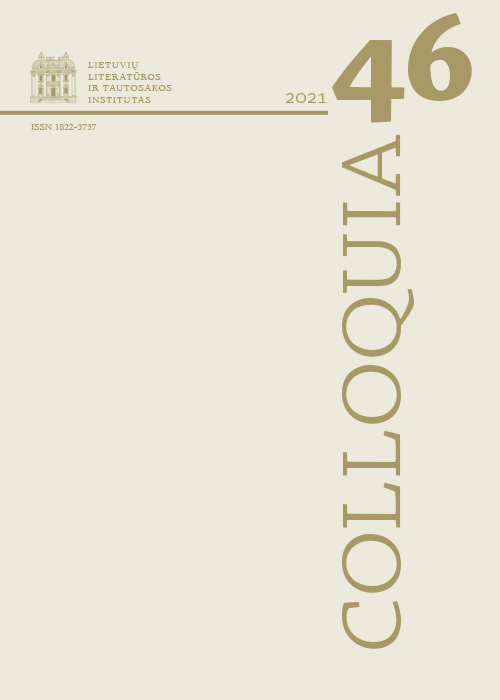Maldos poezija Henriko Nagio ir Liūnės Sutemos pokalbiuose: nuo nevilties iki išsigelbėjimo
Santrauka
Postūmį šiam straipsniui atsirasti davė Liūnės Sutemos eilėraštis „Nespėjau, Kristau, sekti Tave...“, kuriam būdingą krikščioniškos maldos tapatybę lemia asmeniškas subjekto kreipimasis į Dievo Sūnų, netikėtas prašymo maldos pasireiškimas ir kita. Straipsnio tikslas – ištirti Henriko Nagio ir jo sesers Liūnės Sutemos kūrybai būdingą maldos poeziją, jos sampratą grindžiant moderniosios krikščioniškos teologijos požiūriu į maldą. Tyrimui reikšmingos Hanso Urso von Balthasaro, Dorothee Sölleʼs, Michaelio Meyerio-Blancko ir kitų autorių teorijos, jose apmąstomas maldos dialogiškumas (pokalbis), su malda siejamas dramatizmas, maldos, kaip pasakojimo, samprata, teologų atliekamas maldos ir literatūros lyginimas. Nagrinėjama maldos subjekto problema ir bendruomenės reikšmingumas maldos poezijoje, Dievo ir tikėjimo problematika, tebūnie, arba amen, maldos variacijos. Atskleidžiamos dramatinės žmogaus kaltės ir atgailos (kai kuriais atvejais ir kaltinimo) įtampos maldos poezijoje, Dievo ir tikėjimo neigimo drama ir ne mažiau dramatiškas išgelbėjimo įprasminimas, poetinis tebūnie maldos originalumas ir įtaigumas. Krikščionišką maldos matmenį autorių kūryboje įprasmina poezijos žmogaus (kalbančiojo ir kito subjekto) santykio su Dievu asmeniškumas, biblinio pasaulėvaizdžio perspektyva, Kristaus, tradicinių maldų ir tradicinių tikėjimo tiesų, pirmiausia – išganymo, transformacijos, garbinimo, prašymo ir dėkojimo apraiškos. Straipsnis kviečia atnaujinti žvilgsnį į krikščioniškos tradicijos sklaidą Nagio ir Liūnės Sutemos kūryboje, atskleidžia maldos poezijos erdvėje vykstantį poetinį dviejų autorių dialogą.
Atsisiuntimai
Skaitomiausi šio autoriaus(ų) straipsniai
- Dalia Jakaitė, (Ne)būčiai atviros egzistencinės laiko patirtys Vaidoto Daunio ir Valdo Gedgaudo poezijoje , Colloquia: T 36 (2016)
- Dalia Jakaitė, Maldos įspaudai atmintyje: lyrinio subjekto patirtys Alfonso Nykos-Niliūno ir Czesławo Miłoszo poezijoje , Colloquia: T 50 (2022): Colloquia
- Dalia Jakaitė , Tragizmas ir katarsis Alfonso Nykos-Niliūno ir Broniaus Krivicko eilėraščiuose , Colloquia: T 43 (2019)
